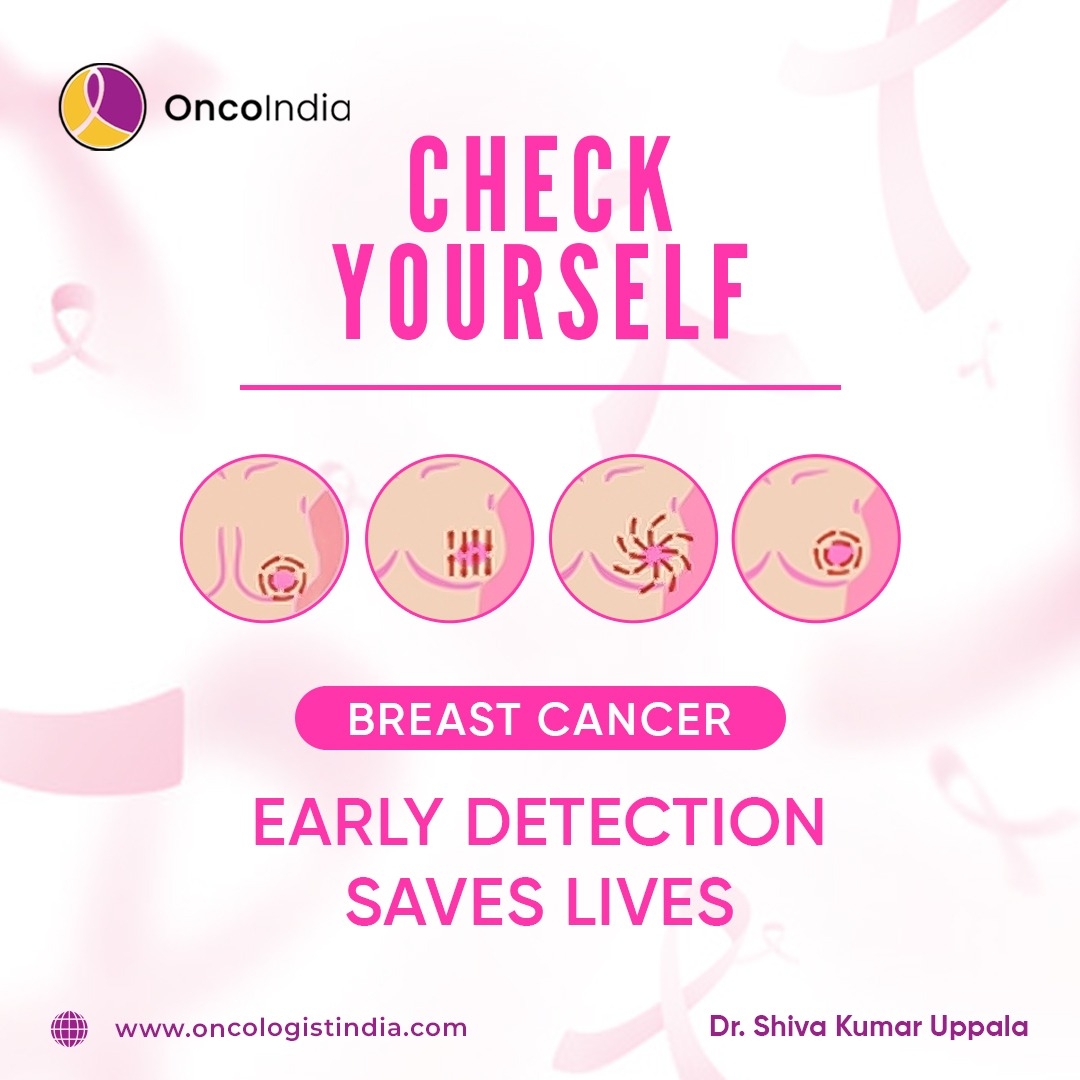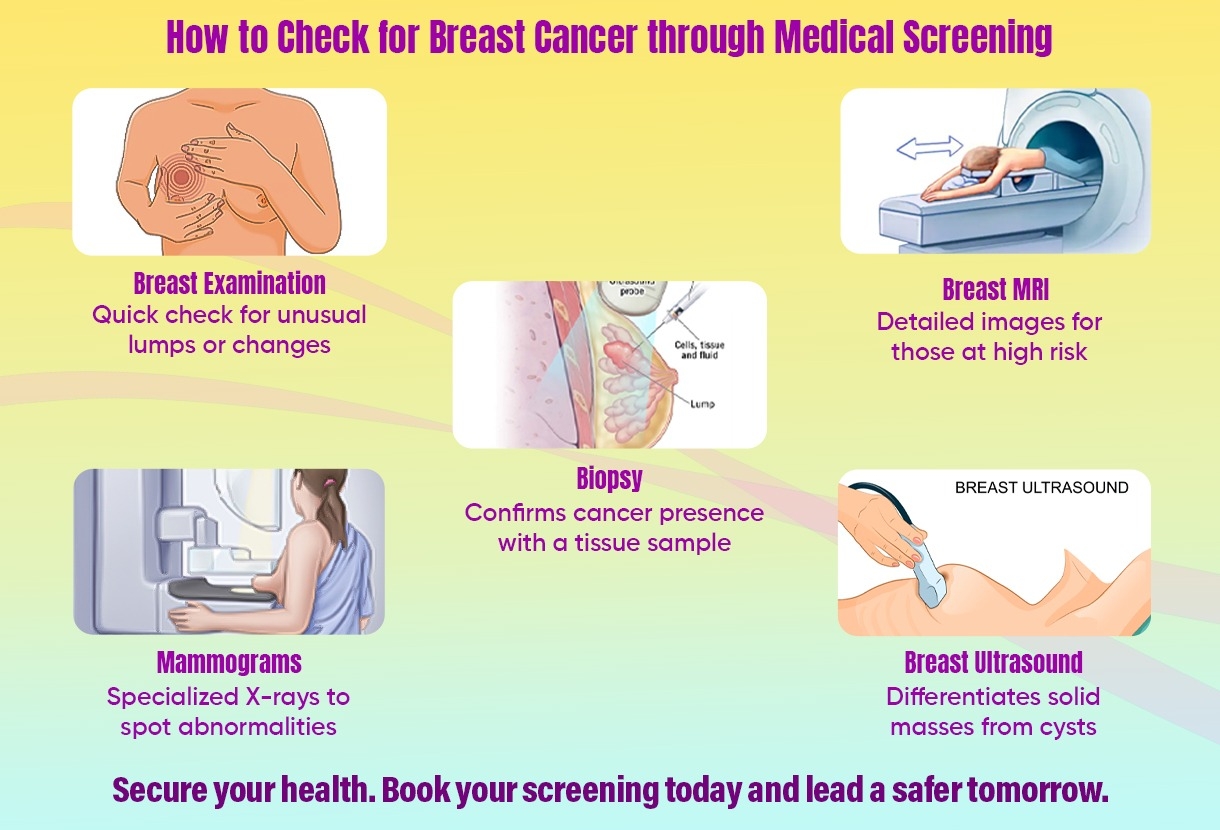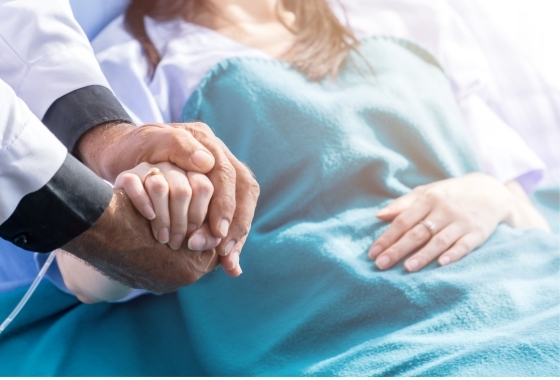How to Check for Breast Cancer: A Complete Guide
Breast Cancer is still a taboo, but it is one of the most common types of cancer globally. In fact, according to a report by the Ministry of Health and Family Welfare, India has the highest number of breast cancer deaths worldwide in 2022.¹ The data reveals the importance of breast cancer, its screening, and treatment.
Understand breast cancer screening as the process of how to check for breast cancer. The screening helps you identify if there are any symptoms of the disease. Your breast cancer screening isn't a magic cure that will treat everything, but it can help find cancer early, and the same can ease your treatment and improve the final results.
Have any questions or queries? Book an appointment today!
The signs of breast cancer can differ from person to person. It is possible that many individuals might not notice any symptoms at all. However, some of the most common symptoms of breast cancer include breast or armpit lumps. In addition to these, here are some common early signs of breast cancer.

Here are some particular symptoms of breast cancer to watch out:
A lump in the breast is one of the first and most common signs of breast cancer. Generally, these are hard lumps in the breast the edges of which are irregular. However, a few cancerous lumps can also be soft. Usually, these lumps are quite small and hard to understand. Here comes mammograms that can detect any warning signs of cancer.
Not to forget, all breast lumps are not cancerous. You can also have lumps in case of cysts, injuries, infections, and for several other reasons. This is why it is important to see a doctor as soon as you notice a lump and get it checked.
Not all kinds of pain in your breast are cancer symptoms. However, a burning sensation or pain in your nipples and breasts can be a potential sign of inflammatory breast cancer. So in any case, if you feel your pain has been there for a long time or is serious, consider visiting a doctor.
In the case of breast cancer, you might notice swelling sometimes before the occurrence of lumps. So, if you notice any change in your breast size or see your lymph nodes swollen, see an expert.

Breast cancer that has already spread largely and was not detected earlier has a few advanced symptoms. The new symptoms vary based on the metastases location. For example, if you are struggling with bone metastases, you might experience pain in your bones or joints. For metastases in the brain, symptoms like confusion, blurry vision, and nausea are common. In the case of the lungs, it might lead to wheezing, breathing difficulty, chest pain, and more, while liver metastases can cause weight loss, abdominal pain, and loss of appetite. All in all, some of the common stage 4 breast cancer symptoms include:

Medical screening can help diagnose breast cancer at an early stage which can make treatment easier. Dr. Shivkumar’s breast cancer diagnosis in Bangalore starts with a one-on-one consultation, understanding your symptoms, and suggesting tests and treatments accordingly.
Here are some of the diagnostic tools that help you understand how to check for breast cancer: ⁴
The breast exam helps the healthcare expert observe and understand if there is anything different with the breast. This includes changes in its shape, size, or texture. They might look for lumps around your breasts, collarbones, or armpits.
Mammograms can be simply understood as X-rays for breast tissues. These mammograms help find out if there is anything unusual; in case something appears weird, a diagnostic mammogram is taken. This helps the doctors have a close look at the breasts and changes.
The MRI equipment is designed to use radio waves and magnetic fields that help capture accurate images of the inside of the body. The breast MRI helps the doctors with detailed pictures showing affected areas.
The breast ultrasound is performed with sound waves that also offer information about the body's structure. For example, an ultrasound can help doctors understand the nature of the lump on your breast or armpits. They can see if it is solid or filled with fluid.
A biopsy is when your doctor removes and uses your tissue sample for lab testing. Once the tissue is carefully extracted using a needle and the ultrasound and x-rays, they then are sent to labs where they are tested if they are cancerous or not. The lab tests also help determine the type of cancer, how fast it is growing, and other essential aspects.
Breast cancer can be of different types with varied signs and symptoms of breast cancer.⁵
The most common types of breast cancer are Invasive breast cancer, Ductal Carcinoma, Lobular Carcinoma, Inflammatory breast cancer, Triple Negative breast cancer, and a few more.
Some of the rare types of breast cancer are Metaplastic, Medullary, etc.
The cancer stage is based on the tumour size and how far it has spread. Sometimes, even the type of tumour cells is taken into consideration. The stages of breast cancer symptoms are classified into five stages, including stages 0,1,2,3 and 4. The stage 0 and 1 are referred to as early stages of breast cancer.⁶
Stage 0 is sometimes also referred to as a precancerous stage. It is non-invasive is only present in the breast lobules or ducts, and hasn't spread further.
At this stage, the cancer is invasive and has now entered into breast tissues. It is of two types:
Here, the tumour is comparatively smaller in size and isn't present in the lymph nodes.
The tumour ranges up to 2 cm and is present in lymph nodes.
Stage 2 is also invasive cancer. Here are its two types:
In this stage, if the tumour is not found, then the cancer cells have already spread to a minimum of one to three lymph nodes. And there might be no spread to lymph nodes but a tumour of 2 to 5 cm in your breast.
In this stage, there is a tumour of 2 to 5 cm, plus the cancer cells have affected one to three lymph nodes. Or there might be no spread to the lymph nodes, but then the tumour is bigger ranging more than 5 cm.
The stage 3 of invasive cancer is further divided into three stages.
Here the tumor affects a larger area and spreads up to four to nine lymph nodes.
The tumour here affects not only up to 9 lymph nodes but also the chest walls. Just so you know, Inflammatory breast cancer is stage 3B.
The tumour continues to grow and affects more and more areas, affecting more than 10 lymph nodes.
The fourth stage of breast cancer is also known as metastatic cancer. Its symptoms vary depending on the location and size of metastases. In this stage, cancer and tumour cells start spreading to different organs, like the liver, brain, chest wall, and so on.
To ensure your disease does not reach its limit, early detection and diagnosis help. Not only do they increase the chances of a successful treatment but early detection helps you save big on cancer costs. Further, it increases your longevity and quality of life.

Now that you know about the early signs, types, and stages of cancer, let's move ahead. Let's see some popular and reliable treatment options to look at when diagnosed with breast cancer. ⁷
Surgery is one of the most common treatment options for breast cancer. Here, the affected lymph nodes are carefully removed by professionals.
Dr. Shivakumar is quite a popular and reputed name for breast cancer surgery in Bangalore. He uses advanced tools and technology for maximum patient satisfaction, results, and quick recovery.
There are a variety of surgical options, including Lumpectomy or Mastectomy. Lumpectomy or breast-conserving surgery is when the cancer cells and surrounding tissues are removed and not the complete breast. Mastectomy is when the whole cancerous breast is removed.
Chemotherapy involves using a drug. This drug prevents the cancer cells from further spreading by killing them or stopping their division. The chemotherapy drug can be taken orally or injected via veins.
Radiotherapy also involves killing the cancer cells. However, it uses high-intensity X-rays for the same.
In recent days, minimally invasive or keyhole surgeries and other advanced techniques have brought quite a transformation. They are preferred by patients for a variety of reasons. First, these are performed by making smaller incisions, meaning smaller surgery scars. Additionally, the recovery time is quite fast and you get shorter hospital stays.
The journey of battling cancer can be hard and mentally exhausting. However, with proper care, diagnosis, and treatment, you have a good chance of recovery. However, it is important to note that your fight against this battle doesn't end at the treatment options but continues and we are there with you. Our post-treatment care and recovery procedure ensures proper healing and avoids the chances of future complications.
Post-treatment, it is important to take care of your physical and mental health for full recovery. Here are a few things you may do.
Breast reconstruction surgery is reconstructing a shape or a breast appearance after your surgical treatment. The goal here is to create natural-looking breasts, helping you have your confidence back.
Regular checks after your treatment are quite important. The reason is simple: it helps the doctor understand if there are any chances of reoccurrence, side effects, or any other concerns related.
At OncoIndia, under Dr Shivakumar, you also have an assurance of counselling and complementary therapies. We ensure you have a safe space to talk to and ask questions. This is important for your mental recovery.

There are a variety of early signs of breast cancer that are alarming and signal you to see a doctor. This includes changes in shape, size, or texture of your breast, breast or armpit lumps, swelling, pain or discomfort, nipple discharge, and so on.
Breast cancer diagnosis can be performed using several diagnostic tools like mammograms, MRIs, breast ultrasounds, and biopsies.
Given the advanced world we are living in, you have a variety of breast cancer treatment options. This includes surgery, chemotherapy, radiotherapy, immunotherapy, and other minimally invasive techniques.
Regular mammograms can help you with early detection of cancer symptoms. However, the right mammogram frequency varies with age. For example, women after 40 should consider getting a mammogram done every year.⁸
A mammogram for breast cancer uses images that can show any unusual growth or area in your breasts.
Yes, there are chances that breast cancer can be hereditary. Five to ten per cent of breast cancer are hereditary breast cancer cases. However, that doesn't mean you are always going to have cancer symptoms just because your relatives used to.
Yes, men can also develop breast cancer in their ductal carcinoma or even glands. However, breast cancer in males is rare and is generally common in older men.
The breast cancer survival rate in India is comparatively lower than the developed and high-earning economies. According to a report by the American Cancer Society, India's cancer survival rate is 68%.⁹
Anyone can have breast cancer. However, there are a few risk factors involved making a few individuals more vulnerable to this disease. This includes age, family history, experience of cancer, previous cancer treatment, and so on.
Your breast cancer treatments like chemo can cause a few effects like nausea, weakness, or fatigue. To ensure you carefully manage these breast cancer treatment expectations, follow a few tips. For example, keep yourself hydrated, get good rest, eat, be calm, and be patient.
Your health should be your top priority. Don't wait any more if you feel yourself struggling with any of these symptoms, book an appointment today and get answers to all your questions. Have a one-on-one session with us today!
References
1.Breast Cancer Symptoms ByWebMD
2.Symptoms of Late Stage Metastatic Breast Cancer By Healthline
3.Types of breast cancer and related breast conditions By Cancer Research UK
4. Breast Cancer Staging By The American College of Surgeons
5. Breast Cancer Treatment (PDQ®)–Patient Version By The National Cancer Institute
Medically Reviewed by Dr. Shiva Kumar Uppala
Medical Director, Surgical Oncologist & Laparoscopic Surgeon (MS (General Surgery), M.Ch. (Surgical Onco) FMAS, FAIS)